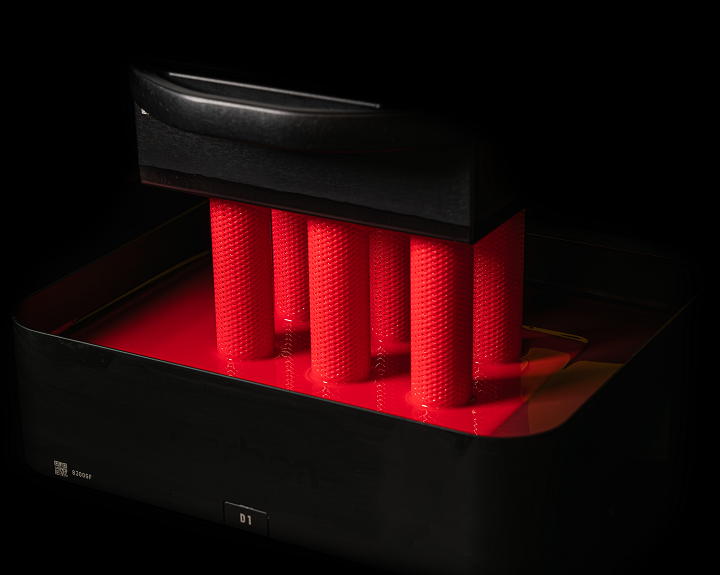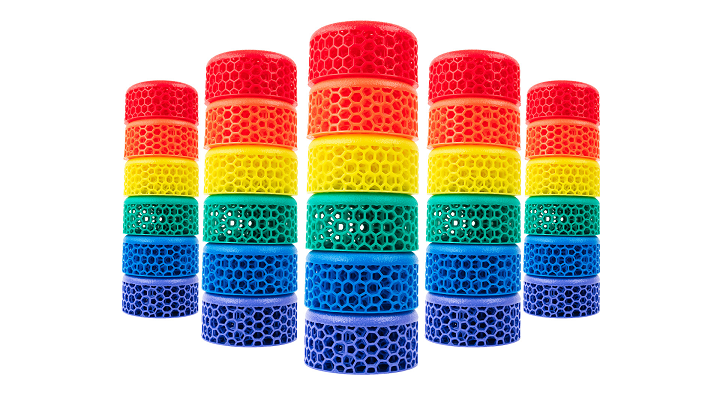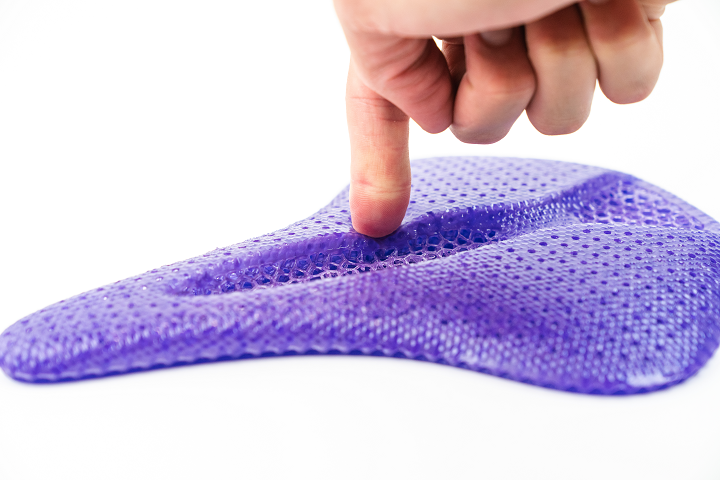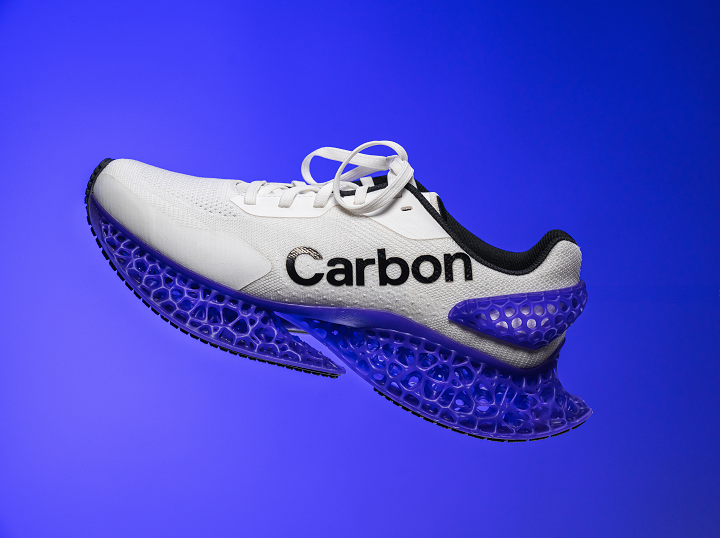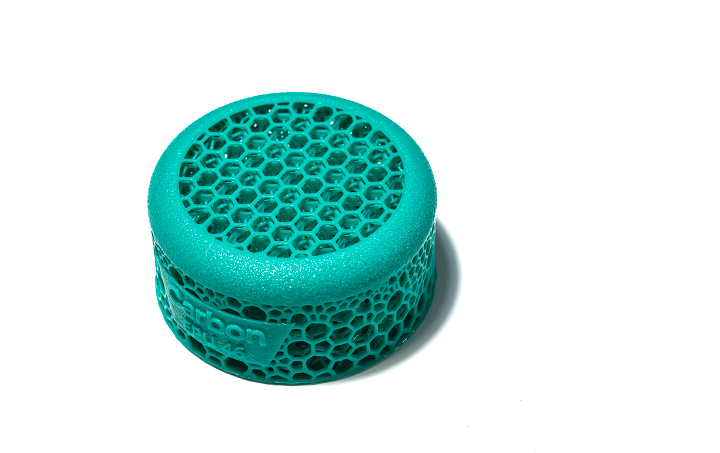Venture-backed Carbon burst onto the scene in 2015, coming out of stealth as the first company to commercialize continuous digital light processing (DLP) technology. The 3D printing double unicorn impressed the industry with not only the speed of its Continuous Liquid Interface Production (CLIP) solution, but also its ability to print end-use parts using heat treatment and a specialty chemical formula. The engineering-quality materials it offers has helped the California-headquartered startup land some major sportswear deals, like adidas, CCM, and Rawlings. More applications like this could be coming with the release of its newest high-performance elastomer, EPU 46.
The product development and manufacturing technology company already has a pretty strong materials library, with six other elastomeric offerings including SIL 30, EPU 40, EPU 41, EPU 43, EPU 44, and EPU 45. But by adding the new customizable EPU 46 to its portfolio, Carbon can grow its idea-to-production platform and meet the growing demand for new product opportunities. Plus, it’s said to be a more sustainable material option.
“EPU 46 is the future of elastomer customization, combining the benefits of performance, comfort and durability with the excitement of custom colors and tunable material stiffness. EPU 46 furthers our commitment to providing a robust and complete idea-to-production platform that can be fully customized to our client’s specifications,” stated Jason Rolland, SVP of Materials at Carbon. “This is truly the next step in our journey to creating anything that can be dreamt up.”
EPU stands for Elastomeric Polyurethane, which means it has the characteristics of rubber; that’s why it’s so good for applications like midsoles. It’s also comparable to Thermoplastic Polyurethane Elastomers, or TPU. Carbon’s elastomeric material family features functional toughness, resistance to chemical, abrasions, and UV light, and the materials are high impact, sterilization compatible, and energy damping. Its new EPU 46, which comes in a rainbow of rich color options to enable customized products, was designed to meet requirement demands for premium products, focusing specifically on aesthetics, comfort, and performance…again, this screams “sportswear applications.” The material offers great durability and high-performance material properties, and users are able to fine-tune its material stiffness as well, but without changing its properties or compromising on printability.
The material’s excellent energy-returning, dual-cure properties offer several important advantages, including speed and customization. EPU 46 offers fast print times, great printability, and a range of material stiffnesses and colors. Speaking of these customizable colors, they won’t change or wear away, because Carbon has added pigment directly to the resin. It also comes in tunable material stiffness values from Shore 78A-55A, because the company was able to tweak lattice parameters, like cell size and strut diameter, to allow for a wider range. This also enabled applications that require tactile qualities, including handles and thin features where it’s difficult to match a soft compression.
Designed for high-volume production efficiency, Carbon’s new EPU 46 is durable enough for demanding, high-performance applications, and due to its inherent customization capabilities, it should be a really great choice for premium products such as footwear, grips, and bike saddles.
Perhaps most exciting about Carbon’s new EPU 46 is that it pushes the company’s efforts in eco-friendliness. Carbon determined four main sustainability focus areas to help minimize its impact on the planet: recycling, hazardous waste reduction, part dematerialization, and bio-based raw materials.
“Bio-derived raw materials from sources such as plants or microbes are renewable and have a considerably lower carbon footprint when compared to petroleum-derived materials,” the company wrote. “Carbon has partnered with companies such as DuPont Tate & Lyle to use bio-derived precursors to polyurethane building blocks in our resin formulations. Production of these bio-derived materials generates 56% less greenhouse gas emissions and uses 42% less nonrenewable energy compared to their petroleum-derived counterparts.”
Just like Carbon’s EPU 44, this new elastomer contains 40% bio-based material; its RPU 130 contains 25% bio-derived components by weight. Additionally, to lower production waste, EPU 46 is designed for solvent-free spin cleaning and resin reclaim.
The new EPU 46 material by Carbon will be available internationally by the end of this month.
Subscribe to Our Email Newsletter
Stay up-to-date on all the latest news from the 3D printing industry and receive information and offers from third party vendors.
You May Also Like
Further Understanding of 3D Printing Design at ADDITIV Design World
ADDITIV is back once again! This time, the virtual platform for additive manufacturing will be holding the first-ever edition of ADDITIV Design World on May 23rd from 9:00 AM –...
3D Printer Maker EVO-tech Reborn as NEVO3D — Once More With Feeling
EVO-tech was a 3D printing service and original equipment manufacturer established in 2013 and based in Schörfling am Attersee, Austria. The company produced high-quality material extrusion systems featuring linear bearings,...
3D Systems Brings 3D Printed PEEK Cranial Implant to the U.S. with FDA Clearance
For more than 10 years, 3D Systems (NYSE:DDD) has worked hand-in-hand with surgeons to plan over 150,000 patient-specific cases, and develop more than two million instruments and implants from its...
CDFAM Returns to Berlin for Second Annual Symposium
The second CDFAM Computational Design Symposium is scheduled for May 7-8, 2024, in Berlin, and will convene leading experts in computational design across all scales. Building upon the first event...


